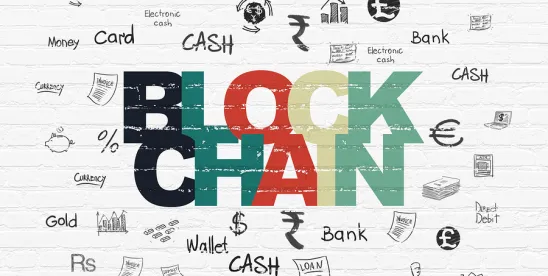Individually, AI and blockchain are among the hottest, most transformative technologies. Collectively, they are incredibly synergistic – hence the 1+1=3 concept in the title. We are seeing more examples of how the two will interact. Over time, the level of interaction will be extensive. Many projects are being developed that bring the power of AI to blockchain applications and vice versa. One of these projects that has garnered significant attention is the Virtuals Protocol. The project launched in October 2024 via integration with Base, an Ethereum layer-2 network. Just recently, the project announced that it is expanding to Solana.
The Virtuals Protocol is a decentralized platform for buying, trading, and creating AI agents. It transforms AI agents into tokenized, revenue-generating assets. By leveraging blockchain technology, Virtuals Protocol enables the creation, co-ownership, and interaction with AI agents, expanding their potential across various applications.
AI agents are software programs that can interact with their environment, collect data, and use the data to perform self-determined tasks to meet predetermined goals. Humans set goals, but an AI agent independently chooses the best actions it needs to perform to achieve those goals. See “What are AI Agents?” for more information.
How Virtuals Protocol Works
The Virtuals Protocol integrates AI agents, blockchain infrastructure, and tokenization to create a scalable, decentralized ecosystem. Here’s a breakdown of how it operates:
- Agent Tokenization: AI agents are minted as ERC-20 tokens with fixed supplies, paired with $VIRTUAL in locked liquidity pools. These tokens are deflationary through buyback-and-burn mechanisms.
- G.A.M.E Framework: Agents utilize multimodal AI capabilities, such as text generation, speech synthesis, gesture animation, and blockchain interactions. This framework allows agents to adapt in real-time.
- Revenue Routing: Agents earn revenue through inference fees, app integrations, or user interactions. The proceeds flow into their on-chain wallets for buybacks or treasury growth.
- Memory Synchronization: Agents retain cross-platform memory through a Long-Term Memory Processor, ensuring user-specific, contextual continuity.
- Decentralized Validation: Contributions and model updates are governed by a Delegated Proof of Stake (DPoS) system, ensuring agent performance aligns with community standards.
- On-Chain Wallets: Each agent operates an ERC-6551 wallet, enabling autonomous transactions, asset management, and financial independence.
What Virtuals Do
The Virtuals Protocol redefines digital engagement across gaming, entertainment, and decentralized economies. By simplifying AI adoption, rewarding contributors, and lowering barriers for non-experts, it creates a scalable ecosystem that delivers value for stakeholders. The platform’s agents collectively hold a valuation of over $850 million at the time of publishing, led by Mentigent and aidog_agent. Ownership of these two tokenized AI agents is fractionalized; each is held by more than 200 owners who receive a share of the revenue generated.
Sample Legal Issues Associated with Virtuals
As with any emerging technology, Virtuals Protocol faces several legal challenges:
- Intellectual Property Rights: The creation and use of AI agents raise questions about the ownership and protection of intellectual property. Ensuring that creators and users have clear rights and protections is crucial;
- Data Privacy: AI agents collect and process vast amounts of user data, raising concerns about data privacy and security. Robust safeguards are necessary to protect user information;
- Liability and Safety Standards: Ensuring the safety and reliability of AI agents is essential. Legal frameworks must address potential liabilities and establish safety standards to protect users; and
- Regulatory Compliance: As AI and blockchain technologies evolve, regulatory compliance becomes increasingly complex. Virtuals Protocol must navigate various legal requirements to ensure its operations remain lawful and ethical.
- Securities Laws: The tokenization of AI agents as ERC-20 tokens and the fractionalized ownership of high-value AI agents may attract scrutiny under securities laws. If the SEC deems these tokens to be investment contracts under the Howey Test, the project could face enforcement actions, requiring registration. See here for our discussion on the SEC’s gameplan for crypto under Trump.
- Consumer Finance Laws: The collection and processing of user data by AI agents could subject the project to data privacy and consumer protection regulations. Furthermore, if promotional efforts are perceived as deceptive or unfair to users or investors, this could lead to enforcement actions under federal or state consumer protection laws. To the extent revenue-sharing models are subject to consumer protection laws, this could trigger requirements for fair and clear disclosures to fractionalized owners.
- AI-Specific Regulations: The Federal Trade Commission (FTC) has issued guidance emphasizing the importance of transparency and honesty in the use of AI, and cautioning against deceptive practices such as making misleading claims about AI capabilities or results. Overstating the capabilities or revenue generating potential of AI agents to attract users or investors could lead to increased regulatory scrutiny and enforcement. Proposed federal legislation, such as the Algorithmic Accountability Act, would require projects like Virtuals to assess the impacts of bias and discrimination on automated decision-making systems, including AI. AI agents may require audits for bias, transparency, and accountability, particularly given their use in user interactions and decision-making.
Despite the novel legal issues Virtuals Protocol presents, the project represents an exciting and significant advancement in the integration of AI and blockchain technologies. By transforming AI agents into tokenized assets, it creates new opportunities for digital engagement and revenue generation. However, addressing the associated legal issues is essential to ensure user trust and the platform’s sustainable growth.




 />i
/>i
